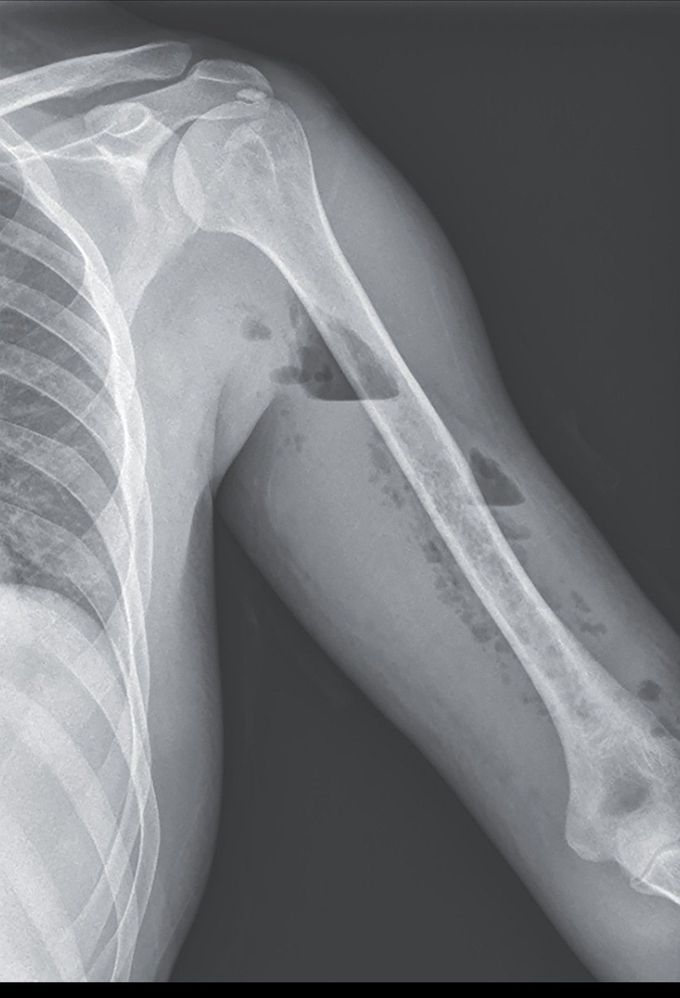


Necrotizing Myositis
A 37-year-old man presented to the emergency department with a 1-week history of pain and swelling in the left upper arm that had started after blunt trauma to the arm during a soccer practice. He had a history of opioid use disorder, which had been treated with buprenorphine. He reported no intravenous drug use during the past 2 years. The heart rate was 120 beats per minute, the blood pressure 96/54 mm Hg, and the body temperature 37.9°C. Examination of the left upper arm was notable for swelling, tenderness, and crepitus. The overlying skin was red and warm to the touch. A radiograph of the upper arm showed radiolucent areas with air–fluid levels in deep tissue. Subsequent computed tomography of the upper arm revealed pockets of gas in the muscles of the extensor compartment. Owing to concern about necrotizing myositis, emergency surgical débridement was performed, and the diagnosis of necrotizing myositis was confirmed. In patients with necrotizing myositis, plain radiographs may show only soft-tissue edema, unlike the radiographic findings in this case. Clinicians should have a high index of suspicion for this life-threatening condition in patients with focal, progressively worsening muscle pain and systemic symptoms. A second débridement was performed 48 hours after the initial surgery. After 3 weeks of broad-spectrum antimicrobial therapy to treat a polymicrobial infection, the patient’s condition improved, and he regained function of his arm.

